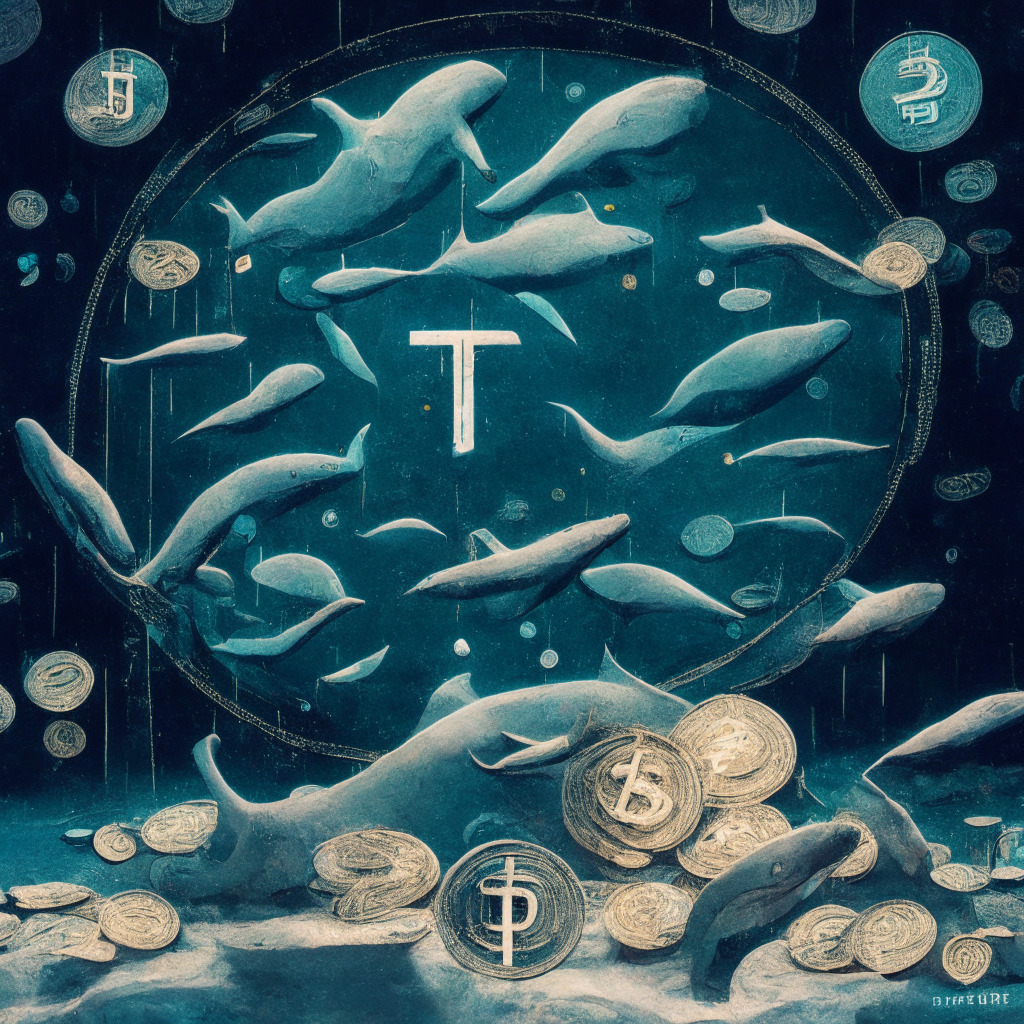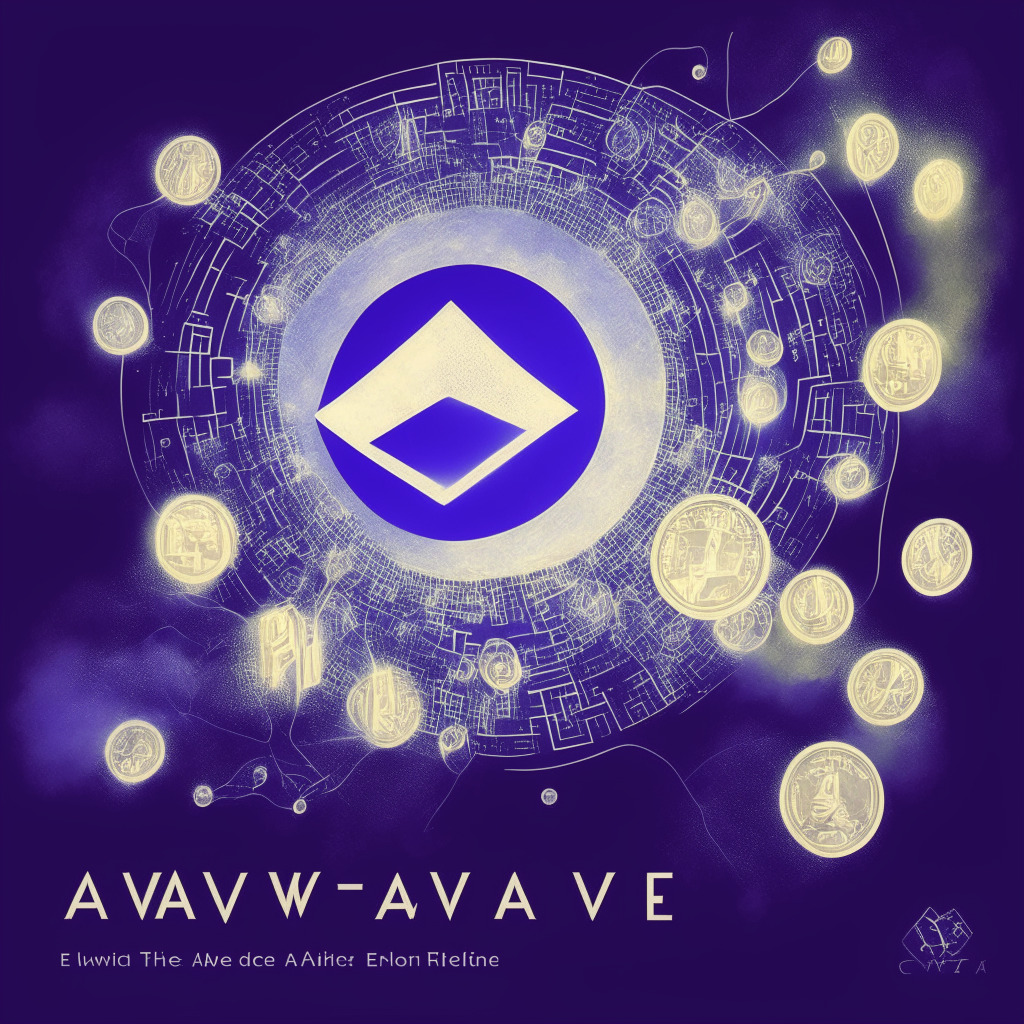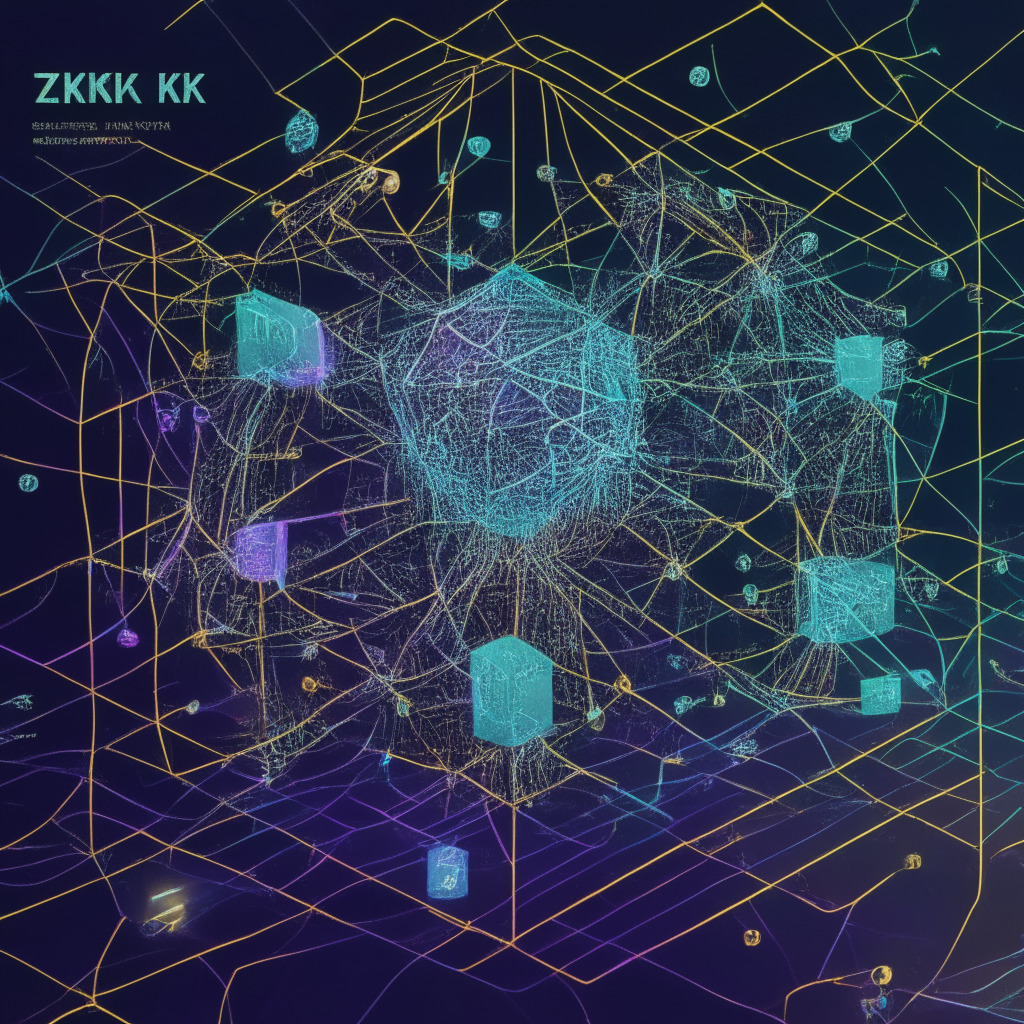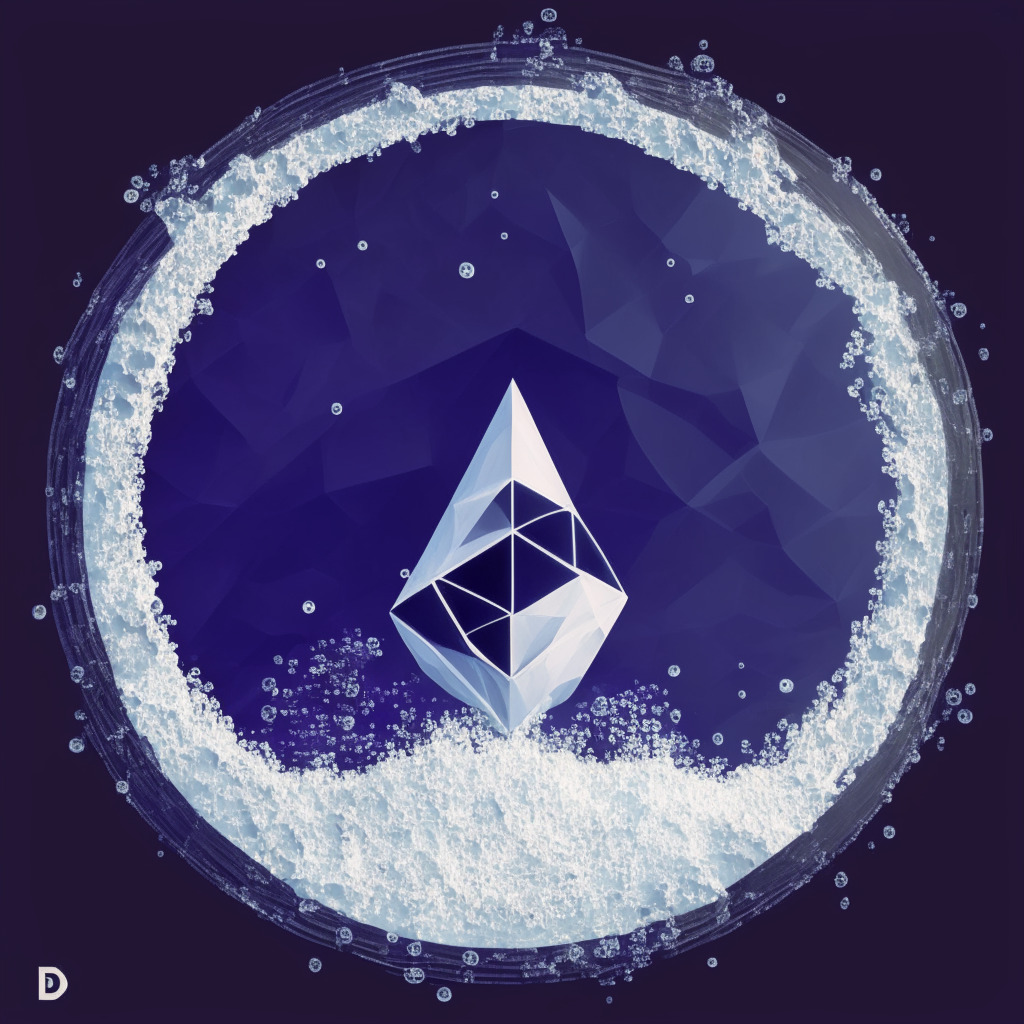Aave token users face two key governance decisions that could reshape the protocol’s future, particularly in managing systemic liquidation risk. Proposals under consideration include disabling borrowing of CRV (Curve’s governance token) on Ethereum and Polygon V3 networks, and reducing the liquidation threshold of CRV.
Search Results for: aave
Reentrancy Attack Plunders Aave Earning Farm: DeFi’s Security Dilemma Unraveled
The blockchain-driven DeFi world, particularly the Aave protocol’s Earning Farm, recently fell victim to a reentrancy attack, leading to a loss of $287,000. This attack, which mirrors previous exploits on other platforms, highlights significant security vulnerabilities in the DeFi sector.
DeFi Deviation: Aave’s Rocky Road or Green Crypto Chimpanzee’s Rising Star
“In the aftermath of a $47m cyber exploit on Cure liquidity pools, DeFi markets and cryptocurrencies like Aave face a challenging future. Some investors are now focusing on innovative projects like Green Crypto Chimpanzee, which integrate environmental sustainability into blockchain technology, offering alternative investment platforms.”
Aave’s Founder’s Proposal to Purchase $2M CRV Tokens: Boost for DeFi or Risky Gamble?
“Aave founder Marc Zeller proposes the Aave Treasury to purchase $2 million worth of CRV tokens, stirring mixed reactions in the DeFi community. Some see this as a boost to the DeFi ecosystem, others warn about increased risk of CRV liquidation.”
Navigating AAVE’s 17% Drop: Risks, Resilience and the Prospects of DeFi Markets
“The recent 17% decline in the AAVE token value has ignited discussions about the volatile nature of the cryptocurrency market. Despite challenges such as the risk of cascading liquidations on DeFi protocols and depegging of the GHO stablecoin, the Aave protocol remains resilient with a substantial insurance fund and steady fee revenue.”
Aave’s GHO Stablecoin Accomplishes $2.5 Million Minting in Two Days: An Insightful Analysis
Aave’s new stablecoin GHO, backed by the Ethereum network, generated $2.5 million within 48 hours of its launch. It operates under the governance of the Aave DAO community and offers robustness and dynamism through over-collateralized assets. With the release of GHO, Aave’s total locked value increased significantly, highlighting the platform’s success and market growth.
Gho’s Spectral Leap: The High Stakes Behind Aave DAO’s Decision on Deploying the New Stablecoin
In an impactful development, Aave DAO may introduce the gho (GHO) stablecoin to the Ethereum blockchain. If approved, GHO would disrupt decentralized finance by allowing users to mint GHO against their token holdings on Aave’s platform, potentially boosting Aave DAO’s revenue.
Aave Token Holders in Governance Standoff: Balancing Higher Gains and Inherent Risks
Aave token holders are voting on a proposal to convert 1,600 ether (ETH) into wrapped staked ether (wstETH) and rocket pool ether (rETH) to secure a higher yield. This move could expose them to volatilities of wstETH and rETH. Despite the potential risk, there’s a positive market sentiment reflected in Aave’s recent price rise.
Aave’s 29% Growth: Exploring the Pros and Cons of Rapid DeFi Expansion
Aave, a decentralized finance (DeFi) lending platform, experienced a 29% surge in value, reflecting growing traction for DeFi platforms. However, concerns about growth sustainability and potential regulatory scrutiny remain. Examining the pros and cons of rapid growth is crucial in understanding this evolving landscape.
Bitcoin Dominance Rises, Aave’s Growth, and DeFi’s Impact on Traditional Finance
Crypto majors such as Bitcoin and Ether experience a price surge, with Bitcoin reclaiming 50% market share amidst regulatory complexity. Aave’s v3 platform sees its total value locked rise by 15%, as DeFi protocols gain traction due to declining confidence in traditional finance.
Tether’s Slight Depegging and AAVE’s Curve Freeze: Analyzing the Impact on Stablecoin Markets
Tether (USDT) experienced a slight depegging from its 1:1 ratio with the US dollar, coinciding with AAVE’s decision to freeze Curve (CRV) use as collateral for loans. This prompted whales and investors to capitalize on arbitrage opportunities, leading to Tether’s depegging at $0.996.
CRV Collateral on Aave: Assessing Liquidation Risk Amid Token Volatility and Debt Concerns
Over 34% of circulating CRV tokens have been deposited into decentralized lending platform Aave as Curve Finance founder Michael Egorov attempts to protect a $65 million stablecoin loan from liquidation risk. However, concerns arise over this strategy’s long-term effectiveness due to the CRV token’s price fluctuations and Aave’s previous actions in addressing debt-related issues.
Aave Secures $15M for NFT-Powered Decentralized Social Media: Lens vs. Traditional Platforms
Aave secures $15 million to develop Lens, an NFT-powered protocol for decentralized social media platforms, enabling users to tokenize social data and transfer it between platforms. Built on Ethereum scaling solution Polygon, Lens aims to consolidate users’ online presence and promote growth across networks.
Exploring Aave’s GHO Stablecoin: Unlocking Financial Flexibility and Bolstering Platform Growth
Aave’s ARFC proposal introduces GHO, a native stablecoin launching on Ethereum mainnet, offering users collateralized minting and financial flexibility. The Aave DAO treasury benefits from GHO loan interest, bolstering platform growth and showcasing commitment to user-centric innovations in decentralized finance.
Aave’s GHO Stablecoin: Innovative Benefits vs Decentralization Risks on Ethereum Mainnet Launch
Aave’s innovative stablecoin, gho (GHO), nears Ethereum mainnet launch with proposals for V3 Ethereum Facilitator and FlashMinter Facilitator. Backed by a basket of cryptocurrencies, gho aims for decentralization, passive income opportunities, and benefits for Aave’s decentralized autonomous organization (DAO) while confronting potential risks.
Bitcoin Reclaims $28K: Analyzing ARB, XRP, EOS, & AAVE’s Potential Recoveries Amid Market Shift
Bitcoin reclaims $28,000 mark amidst positive sentiment in the crypto sector following US debt ceiling deal agreement. As market data indicates potential short-term up-moves for select altcoins such as ARB, XRP, EOS, and AAVE, investors should remain cautious with the unpredictable market movements.
Aave V2 Polygon Bug: How It Happened and the Road to Recovery
Aave V2 users on the Polygon blockchain have faced difficulties accessing funds due to a faulty upgrade in the ReserveInterestRateStrategy contract, affecting various token holders. Despite challenges, Aave governance proposed a solution and continues to address the issue while maintaining platform stability.
Aave’s Polygon Issue: Funds Stuck, Solution Hinges on Crucial Governance Vote
Aave recently faced an issue with its V2 Polygon platform, preventing users from interacting with Wrapped Ether, Tether, Wrapped Bitcoin, and Wrapped Matic pools, and withdrawing assets. Aave V2’s ReserveInterestRateStrategy upgrade is incompatible with Polygon, impacting assets worth $110 million. Aave assures funds are safe, pending a governance vote to resolve the issue.
Aave Deploys on Ethereum’s Metis: The Future of DeFi and Layer-2 Scaling Showdown
Aave deploys on Ethereum layer-2 scaling platform Metis, bringing DeFi features and products to the ecosystem. Metis users gain access to DeFi borrowing and lending services, efficient asset borrowing, enhanced risk management, and reduced transaction fees through gas optimization.
Aave
Aave plans to deploy Version 3 (V3) on Ethereum’s layer 2 ecosystem, Metis Network, following a unanimous community vote, aiming to boost market liquidity and grant Metis users access to Aave’s borrowing and lending features. However, potential drawbacks may arise from added complexity in an already intricate ecosystem.
Unraveling Circle’s Launch of Native USDC on Ethereum Layer 2: Innovation, Adoption, and Potential Risks
Circle, the blockchain and finance tech firm, has revealed its native USDC tokens on the Ethereum Layer 2 scaling protocol, Polygon. This move aims to allow smoother accessibility of USDC to users and developers. Businesses using USDC on Polygon can create decentralized applications for near-instant, low-cost transactions, revolutionizing payments, remittances and trading. However, adoption faces challenges including complex technology and security concerns.
The Ethereum Heist: Unmasking Friend.tech’s SIM Swap Attacks and Ensuring Future Security
Users of Friend.tech experienced SIM swap attacks, leading to a theft of over $385,000 in Ethereum. Due to weaknesses in the platform’s infrastructure, it’s suggested that $20 million of Friend.tech’s $50 million could be vulnerable.
Bitcoin’s Rally and Altcoin Seachange: A Dive into the Potentials and Pitfalls of ‘Uptober’
“Despite a third quarter fall, Bitcoin’s positive closure in September, a first since 2016, opens doors for potential altcoin gains. A historical trend suggests gains in October, yet trading strategy readiness remains essential. While Bitcoin’s resilience sparks altcoin interest, not all will skyrocket. Altcoins like MKR, AAVE, RUNE, and INJ are observing signs of recovery.”
Navigating Complex Debt: Founder of DeFi Protocol Curve’s Multi-Million Dollar Maneuver
Michael Egorov, founder of DeFi protocol Curve, employed a strategy to settle his extensive obligations on Aave. He deposited millions of CRV as collateral on a lending platform, and borrowed Curve’s crvUSD stablecoin, which he exchanged for USDT to clear his Aave debt. Despite significant outstanding debt across several DeFi platforms, Egorov has been proactive in lessening his debt and usage rate.
Navigating Stormy Waters: How Curve Finance Founder’s Debt Reduction Casts Light on DeFi’s Potential Pitfalls and Promises
“Michael Egorov, founder of Curve Finance, reduced his debt to $42.7M through repayment on Aave’s DeFi platform and other key protocols. Despite the near $100M debt risk and a $47M loss from a security vulnerability that caused a CRV token price crash, Egorov continued to decrease his debt, offering a cautionary tale on DeFi debt and blockchain security risks.”
Decoding Chainlink’s Multisig Wallet Controversy: Centralization Concerns Vs. Market Performance
Chainlink recently altered its multisig wallet’s signature rule, shifting from a 4-of-9 to a 4-of-8 requirement. Critics suggest this change and removal of a wallet address may indicate potential centralized control risking the DeFi ecosystem’s integrity. Regardless, Chainlink maintains its utility in DeFi projects and its token value keeps growing.
Chainlink’s Signature Change: A Decentralization Dilemma Stirring Trust and Security Concerns
Chainlink recently made an unannounced change to its multi-signature wallet. The number of signatures required for transactions was reduced, which raised concerns about the decentralization risk of the blockchain platform. Despite clarifications from Chainlink, the skepticism remains and highlights the often unresolved trade-off between absolute decentralization and absolute security in the blockchain world.
Unveiling Consensys Fellowship Program: Catalyst for Web3 Startups or Impractical Venture?
Blockchain leader Consensys introduces its first Consensys Fellowship Program, aiming to support Web3 startups. The non-equity program offers potential investments of up to $1.5 million, hands-on workshops, mentorship from industry professionals, and flexible part-time structure. It encourages innovative Ethereum use cases and startup growth.
Undervalued Ether? Evaluating Ethereum’s True Value in Light of Layer 2 Adoption
“According to RRx, Ether, the cryptocurrency of the Ethereum blockchain, is trading at a 27% discount to its intrinsic value. This valuation is based on a modified Metcalfe law model, considering both Ethereum’s mainnet active users and the usership of its layer 2 scaling networks.”
OpBNB’s Public Launch: Evaluating BNB Chain’s L2 Scaling Solution and its Effect on the Ecosystem
“BNB Chain’s Ethereum-compatible L2 has gone public after successfully testing its Optimism-powered layer 2 scaling platform. Aimed at providing lower gas costs and faster transactions, it displayed potential but not without some concerns, such as the week-long fund lockup during verification checks. Despite potential drawbacks, BNB Chain’s progress towards a swift, secure, and economical opBNB platform is laudable.”
Finoa’s Innovative Step: Bridging DeFi and Regulatory Institutions with FinoaConnect
The Berlin-based cryptocurrency firm Finoa is launching FinoaConnect, a proprietary wallet integration allowing its clients to access handpicked decentralized finance (DeFi) platforms and web3 applications. This development aims to reframe the relationship between DeFi and regulatory institutions, offering a secure, regulated solution for institutional investors keen to engage with these technologies.
Noncustodial Liquidity Markets: Bridging Decentralized Finance with Seamless Lending & Borrowing
A Layer-2 network known as Base introduces noncustodial liquidity markets, changing the traditional ‘trust humans over algorithms’ dynamic. This innovation allows smart contracts to connect liquidity pools with borrowing strategies and promotes transparency. The Seamless Protocol enables streamlined undercollateralized borrowing, minimizing complexity and challenges usually associated with typical DeFi loans.































